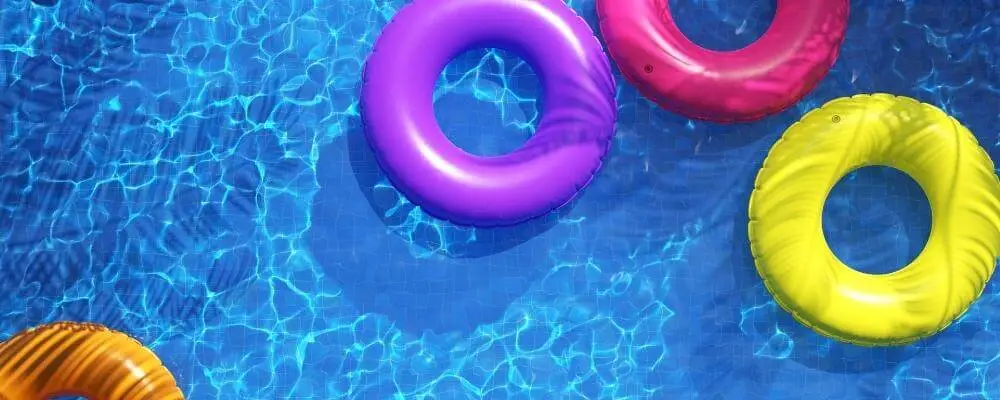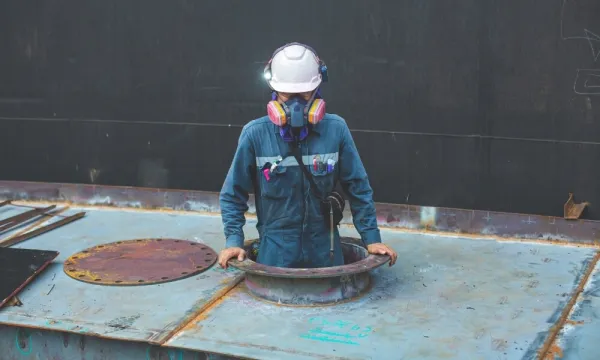11 Swimming Pool Safety Tips Every Parent Should Know

Swimming pools are synonymous with laughter, splashes, and memorable family moments. But behind the fun and games, there’s a pressing need for vigilance. Every year, unfortunate accidents, many involving young children, serve as a somber reminder of the potential dangers lurking around pools. As parents, the safety of our little ones is our primary concern, and when it comes to pools, taking precautions is not just wise; it’s imperative.
This blog delves into 11 essential swimming pool safety tips that every parent should be armed with. From the basics of supervision to the nuances of pool equipment, our comprehensive guide aims to ensure your family’s pool time remains both enjoyable and safe. Dive in with us as we navigate the waters of pool safety.
Hazards Associated With Swimming Pools
There are several hazards associated with swimming pools. Some of these include:
- Drowning – Drowning is the leading cause of death in children under five and is a severe hazard for people of all ages. It only takes a few inches of water for a person to drown, so it’s important to always supervise children around pools.
- Electrical Hazards – Swimming pools often have electrical equipment, such as pumps and lights. This equipment can pose a severe hazard if improperly maintained or used correctly. Always ensure that any electrical equipment near pool areas is turned off when not in use and that cords are not frayed or damaged.
- Chemical Hazards – Chlorine and other chemicals are used to maintain swimming pools. These chemicals can be harmful if they are not used properly. Always follow the manufacturer’s instructions when using pool chemicals.
- Slip and Fall Hazards – Wet surfaces around pools can be slippery, posing a hazard of slip and fall accidents. Be sure to keep the area around your pool clean and free of debris to prevent slips and falls.
Swimming Pool Safety Tips Every Parent Should Know
As the temperature rises and summer approaches, we often look forward to enjoying the sunny weather with activities like swimming. However, it’s important to remember that swimming can also pose risks if safety measures are not followed. To keep everyone safe, here are 11 crucial tips on swimming pool safety that parents should be aware of.
1. Supervision is Key
The significance of constant supervision around swimming pools cannot be overstressed. Children’s movements can be unpredictable when playing around a pool. Even if they know basic swimming techniques, sudden incidents like cramps, collisions, or swallowing water can lead to life-threatening situations.
Unfortunately, the misconception that drowning is always a noisy, dramatic event is far from reality. Drowning often happens quickly and quietly, without splashing or cries for help. This is why an adult, preferably one who knows how to swim and perform CPR, should always be present and attentive, ensuring that they can intervene immediately if a child faces any difficulty.
2. Teach Swimming Early
Introducing children to water at an early age provides them with beneficial skills and helps reduce the fear and unfamiliarity associated with water. Early swimming lessons teach children basic skills like floating, treading water, and breath control.
These skills, although basic, can be the difference between life and death in a critical situation. Furthermore, familiarity with water can lead to more calculated and less panicky reactions if they ever find themselves in a challenging water situation.
3. Barrier Fencing
A swimming pool, while a source of recreation, can be a magnet for curious children, attracting them with its shimmering appeal. However, the danger lies in unsupervised access. A barrier like a fence at least 4 feet high is recommended to prevent this. This height ensures that most children can’t easily climb over.
Additionally, features like self-closing and self-latching gates add an extra layer of security. Ensuring the latch is placed higher than a child’s reach significantly minimizes the chances of a child gaining unsupervised entry.
4. Safety Covers
Pools left uncovered when not in use can appear inviting, especially to younger children who want to touch the water or retrieve a floating object. A safety cover acts as a physical barrier, preventing accidental falls into the water.
Unlike regular covers that might only protect the pool from debris, a safety-designed cover can bear the weight of a child without collapsing, thus acting as a safeguard against potential drowning incidents. It’s vital to ensure that these covers are adequately secured and that no gaps could allow a child to slip under.
5. Avoid Floaties as Safety Devices
Floaties, including arm bands and inflatable rings, are popular among children and can give them confidence in the water. However, they are not foolproof safety devices. Their buoyancy depends on air, and any puncture or air leakage can lead to them deflating, removing the support they offer. This can lead to children panicking if they find themselves suddenly submerged.
Instead of relying on such devices, investing in certified life vests or jackets specifically designed to keep the wearer afloat in water is better. Life vests provide a more consistent and dependable flotation mechanism, reducing the risk associated with sudden loss of buoyancy.

6. Alarms
With technological advancements, pool and gate alarms have become essential safety tools for homeowners with swimming pools. These alarms can be set to sound an alert if someone, especially a child, enters the pool area unattended or if there’s a disturbance in the water, indicating a potential fall-in.
They serve as an additional layer of security, ensuring that even if a child manages to bypass other protective measures like fencing, their presence in the pool area does not go unnoticed. Prompt notification can allow for swift intervention, drastically reducing the risk of accidents.
7. Clear the Deck
A clean and uncluttered poolside is not just aesthetically pleasing but is also safer. Toys, floats, or other enticing items can draw children toward the pool, increasing the risk of accidental slips or falls.
Moreover, these objects can also become tripping hazards for adults, especially in wet conditions. By keeping the deck clear and ensuring that all toys and floats are stored away when not in use, parents can reduce its attraction and inherent risks.
8. Emergency Preparedness
The value of being prepared for emergencies cannot be overstressed. In the unfortunate event of an accident, every second counts. Having essential life-saving equipment, such as life rings or reaching poles, within arm’s reach can make the difference between life and death. Equally crucial is having a phone nearby to call for professional medical help when needed.
Additionally, the importance of CPR and basic lifesaving skills is paramount. Drowning victims, especially children, have a higher chance of survival if CPR is administered quickly and correctly. Hence, it’s beneficial for family members to be trained in these skills, ensuring they can act effectively in emergencies.
9. Drains and Suction
Pool drains, while essential for maintaining clean water, can pose a severe threat if not adequately secured. There have been instances where individuals, especially children, have had their hair or limbs caught in pool drains, leading to tragic consequences. The suction force can be powerful enough to trap a person underwater, making it impossible for them to surface.
Therefore, it’s crucial to ensure drains have covers conforming to safety standards, specifically those designed to prevent entrapment. Educating children about the dangers of getting too close to drains can also mitigate risks.
10. Establish and Enforce Rules
Just as any other sport or activity has its safety guidelines, swimming should also come with its set of rules. All family members should clearly, and consistently enforce and understand these rules. Simple directives such as prohibiting running on wet tiles can prevent slips, while rules against diving in shallow areas can avert head injuries.
Swimming with a buddy ensures that there’s always someone to raise the alarm or assist if a swimmer faces trouble. Reminding children of these rules ensures they become ingrained behaviors, fostering a safe swimming environment.
11. Educate About the Dangers
While swimming pools bring joy and fun, children need to understand that they are not without risks. As they grow, a mature understanding of water safety can be invaluable. Recognizing signs of someone in distress, such as silent struggling, gasping, or inability to call out, can be lifesaving.
Equally important is educating them about how to respond: calling for help, using life-saving equipment, or performing CPR if trained. Such education empowers children, ensuring they respect the water and understand the associated dangers.
Conclusion
Ensuring the safety of our loved ones, especially children, around swimming pools is a responsibility we cannot afford to overlook. The joys and memories created by the shimmering waters should never be overshadowed by preventable tragedies. By implementing the 11 safety tips we’ve outlined, parents can establish a protective environment where fun and safety go hand in hand.
Remember, being informed and proactive doesn’t diminish the fun; it ensures that the laughter and splashes continue for years to come. As we wrap up, we urge every parent to prioritize these measures, ensuring that every pool day concludes with happy memories and the comforting peace of a day well-spent and secure.



